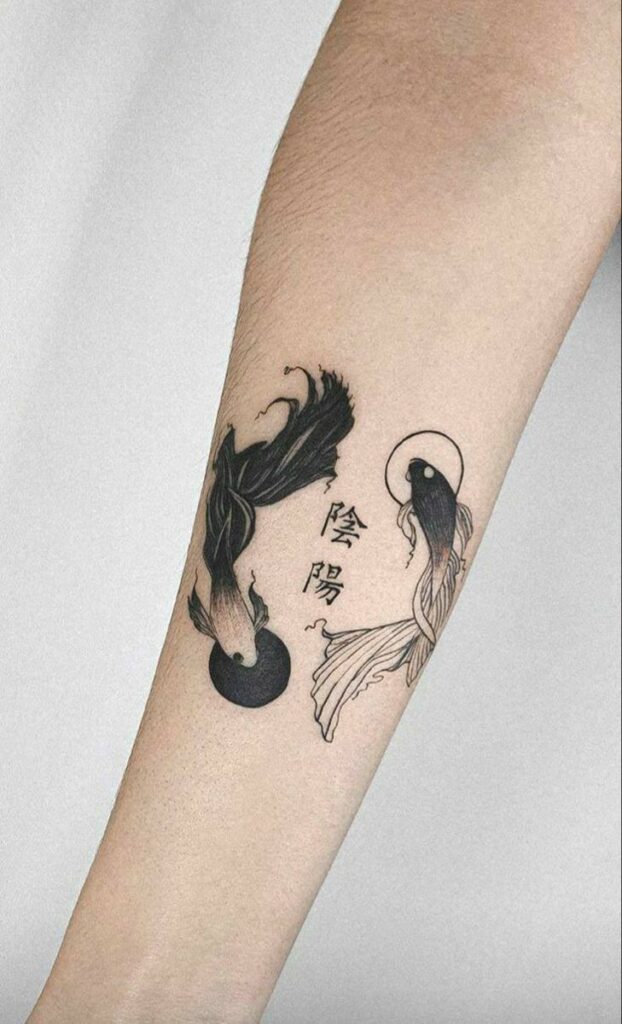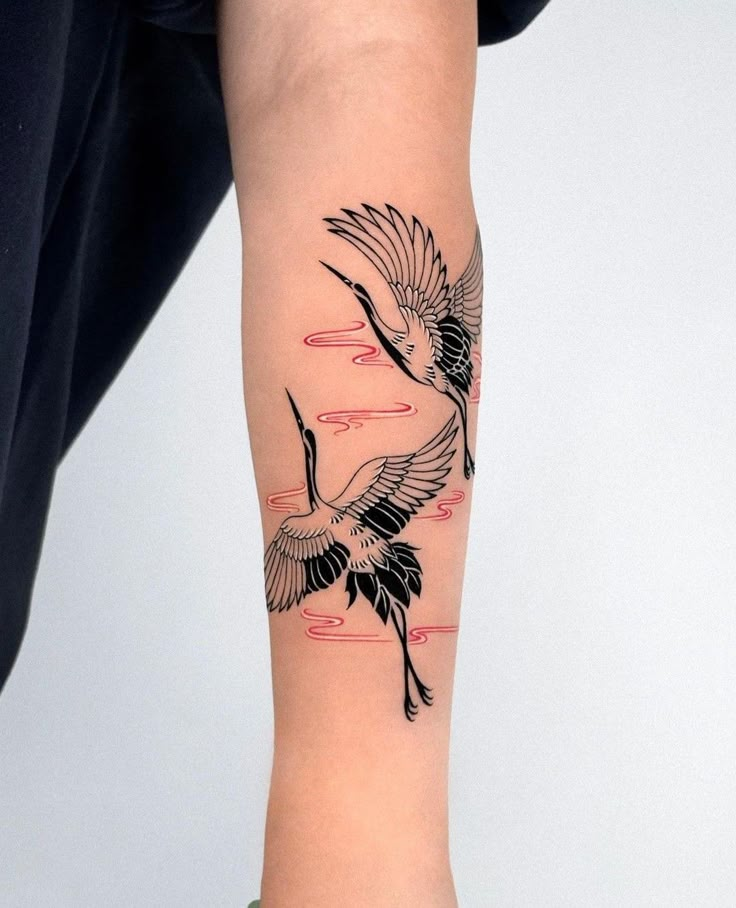Japanese tattoos, known for their intricate artistry and cultural significance, represent a rich heritage that dates back centuries. These designs are more than just body art; they embody stories, beliefs, and traditions that connect you to a deep-rooted lineage. Understanding the themes and symbols prevalent in these tattoos can enhance your appreciation for their craftsmanship and historical context.
As you explore the world of Japanese tattoos, you’ll find a variety of styles and designs, each with its own unique meaning. From koi fish to cherry blossoms, these images serve as a reflection of life, nature, and spirituality, inviting you to engage with a narrative that transcends time.
1) Irezumi: The Traditional Full-Body Masterpiece
Irezumi is a traditional form of Japanese tattooing that encompasses intricate designs covering large areas of the body, often the entire back, arms, and legs. This art form has deep cultural significance and a rich history, tracing back centuries.
Typically crafted using the tebori technique, which involves hand-poking with a bamboo or metal needle, Irezumi tattoos are known for their vibrant colors and bold lines. The process is meticulous, often requiring multiple sessions to complete a full-body piece.
Common motifs in Irezumi include koi fish, dragons, and cherry blossoms. Each symbol carries its own meaning, reflecting themes of strength, resilience, and beauty. For instance, koi fish represent perseverance, while dragons symbolize power and protection.
Traditionally, these tattoos were associated with the yakuza, Japan’s organized crime. However, today, Irezumi is embraced by many as a form of self-expression and art.
You may find that the cultural depth and artistry of Irezumi provide a unique appeal. It encapsulates a blend of tradition and personal narrative, making each piece a significant masterpiece.


2) Hannya Mask: Symbolizing Wisdom and Good Luck
The Hannya mask is a notable symbol in Japanese tattoo art. Originating from Noh theater, it represents a woman transformed by rage and jealousy. Despite its fierce appearance, it carries deeper meanings.
In tattoos, the Hannya mask represents wisdom and protection. Many believe that wearing this tattoo brings good luck and wards off negative energy. The intricate details of the mask showcase the artist’s skill and reflect cultural narratives.
The Hannya mask often features vibrant colors. Red symbolizes passion, while white is associated with purity. These colors enhance its visual impact and meaning.
This design resonates with those who appreciate its complexity. A tattoo of the Hannya mask serves as a reminder of the balance between emotions and wisdom. It embodies the dual nature of humanity, recognizing both strength and vulnerability.


3) Koi Fish: Representing Perseverance and Strength
Koi fish are a significant symbol in Japanese culture. They represent perseverance, strength, and the ability to overcome adversity.
The koi’s journey upstream is a powerful metaphor. In folklore, a koi that swims against strong currents can transform into a dragon after reaching the waterfall. This metamorphosis highlights the rewards of determination.
In tattoo art, koi designs often incorporate vibrant colors and intricate details. Commonly depicted in shades of orange, red, and black, these tattoos can convey different meanings based on colors and patterns.
Koi fish tattoos can also symbolize personal growth and transformation. When you choose a koi fish tattoo, you embrace its rich heritage. It serves as a reminder to stay resilient in the face of challenges.
Overall, koi fish tattoos are a beautiful way to express your values. They celebrate your strength and journey, making them a popular choice for many tattoo enthusiasts.


4) Sakura Flowers: Celebrating Beauty and Transience
Sakura flowers, or cherry blossoms, hold significant meaning in Japanese culture. They symbolize the beauty and brevity of life, reflecting the idea that beauty is often fleeting.
In tattoo art, sakura designs often showcase delicate pink petals. The gentle curves and soft colors create an elegant and meaningful representation.
When you choose sakura for a tattoo, you embrace the concept of impermanence. These flowers bloom vibrantly for only a short time each spring, reminding you to appreciate the present moment.
Sakura tattoos can be paired with other elements like cranes or waves, adding depth to their symbolism. Each design choice enhances the story you wish to tell through your ink.
Choosing a sakura tattoo connects you to a rich tradition, blending aesthetics with profound meaning. This art form captures the essence of life’s transient nature beautifully.



5) Dragon Tattoos: Emblems of Power and Protection
Dragon tattoos hold significant meaning in Japanese culture. These captivating designs symbolize strength, wisdom, and protection.
You’ll find that dragons are often depicted as benevolent creatures, in contrast to the Western concept of dragons as adversaries. In Japanese lore, they are guardians of water and bringers of rain, essential for agriculture.
When choosing a dragon tattoo, consider its vibrant colors and intricate details. Each element, from the scales to the claws, plays a role in conveying your personal story.
These tattoos can also represent personal transformation and resilience. Many individuals choose them during pivotal moments in their lives, reflecting change and empowerment.
The placement of a dragon tattoo is important. Common locations include the back, arms, and chest, where the design can flow with your body’s lines.
Opting for a dragon tattoo connects you to a rich cultural heritage, linking you to the strength and wisdom associated with these majestic creatures.


History of Japanese Tattoos
Japanese tattoos span centuries, reflecting cultural shifts and artistic evolutions. You will find a deep connection between these tattoos and Japanese traditions, beliefs, and societal views.
Cultural Significance
Traditionally, Japanese tattoos, or “irezumi,” were not merely art but also symbols of identity and status. In the Edo period (1603-1868), tattoos were often associated with the working class. They provided a form of expression for firefighters, laborers, and even criminals.
In these contexts, tattoos served as a badge of honor, showcasing bravery or resilience. Additionally, some designs were believed to offer protection against evil spirits. Various motifs, such as koi fish and dragons, each carried symbolic meanings, reflecting virtues like strength and perseverance.
Evolution of Styles
The evolution of Japanese tattoo styles has been influenced by both societal changes and Western contact. Initially, tattoos were linked to Japan’s underclass, but during the Meiji period (1868-1912), the perception began to shift.
Artists like Utagawa Kuniyoshi played a pivotal role in popularizing tattoo art. Ukiyo-e woodblock prints informed tattoo designs, leading to intricate artwork featuring vibrant colors and detailed imagery.
In modern times, the art form has gained international acclaim, merging traditional techniques with contemporary styles. Today, Japanese tattoos coexist within various cultures, appreciated for their beauty and historical depth, while still adhering to their rich traditions.
Symbolism in Japanese Tattoos
Japanese tattoos are rich in symbolism, often reflecting deep cultural meanings. Each design element, from images to colors, carries its own significance and connects the wearer to various traditions and beliefs.
Common Themes and Motifs
Many Japanese tattoos feature distinct themes and motifs, each symbolizing particular attributes or stories. Some popular motifs include:
- Dragons: Represent strength, wisdom, and protection. They are often associated with water and the ability to bring rain.
- Koi Fish: Signify perseverance and the quest for success. A koi swimming upstream symbolizes determination against adversity.
- Cherry Blossoms: Emblematic of the transient nature of life, reflecting beauty and the passing of time.
- Tigers: Symbolize courage, protection, and might, often associated with warding off evil spirits.
These motifs are not randomly chosen; they resonate with traditional folklore and aesthetic values, creating a powerful narrative for the wearer.
Color and Meaning
Color plays a crucial role in the symbolism of Japanese tattoos. Each hue conveys meaning, enhancing the story behind the design.
- Red: Represents life, vitality, and the power of love.
- Black: Often used for outlining, symbolizing strength and permanence.
- Blue: Refers to auspiciousness and tranquility, frequently associated with water themes.
- Green: Signifies fertility and growth, linking to nature.
When combined thoughtfully, the colors in a tattoo serve to deepen its meaning, turning the body into a living canvas of art and story.
- 639shares
- Facebook0
- Pinterest639
- Twitter0
- Reddit0


